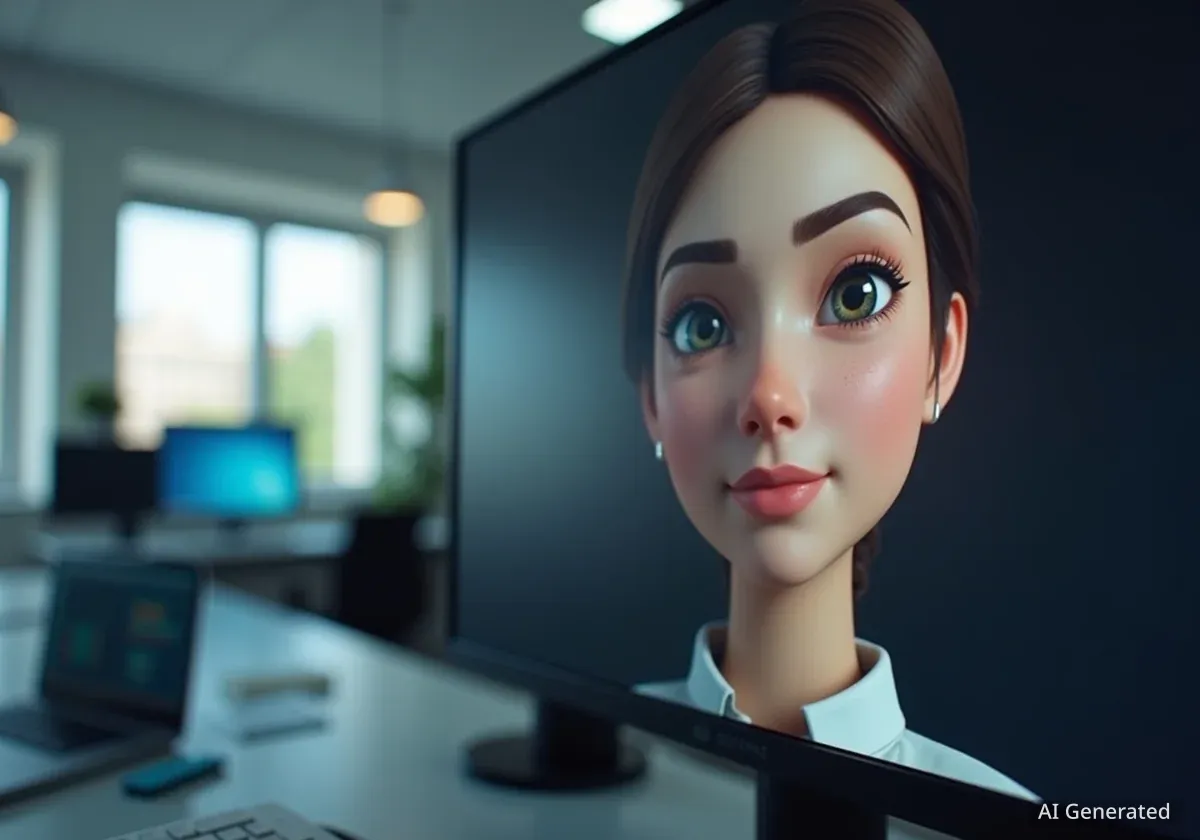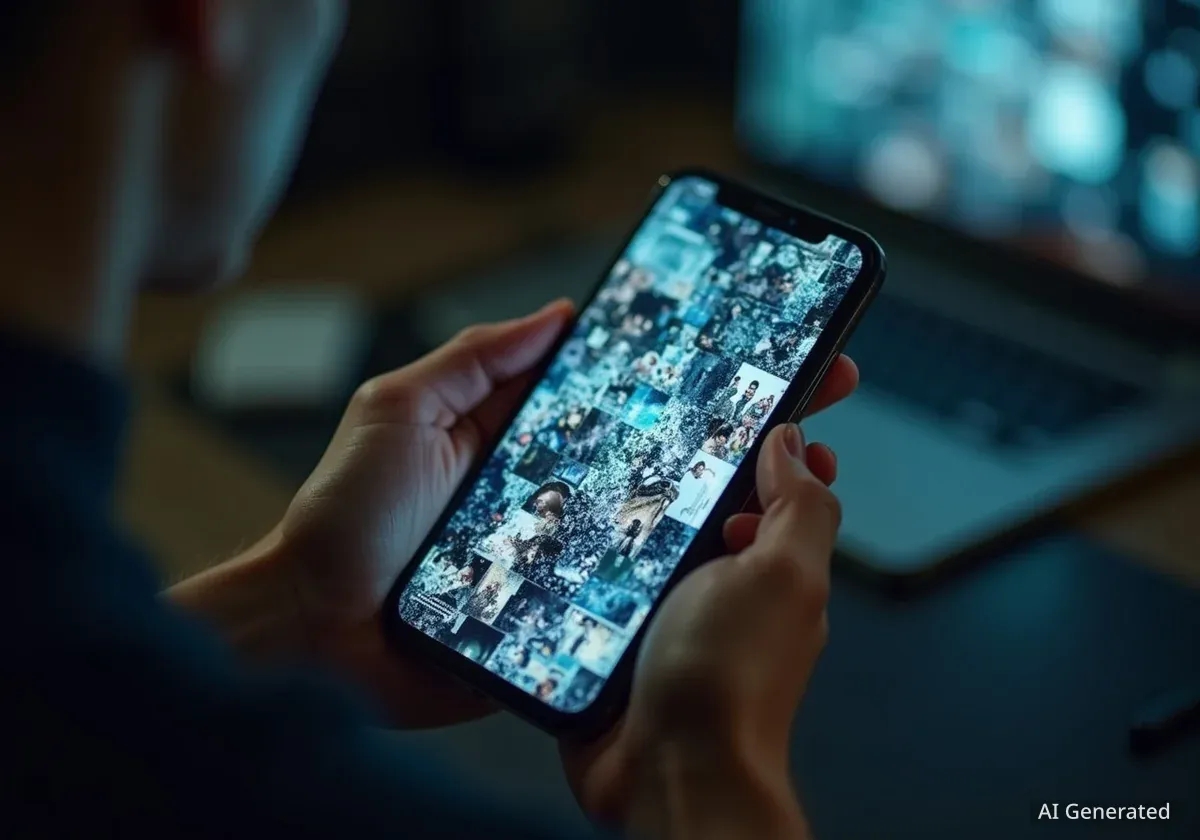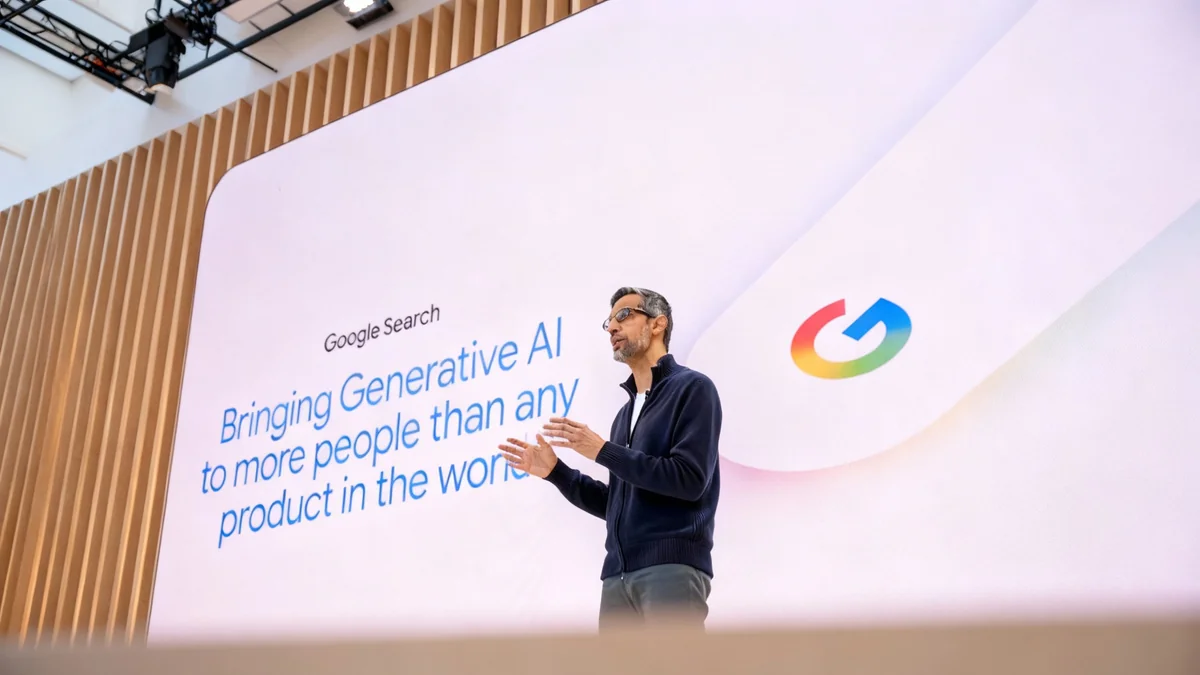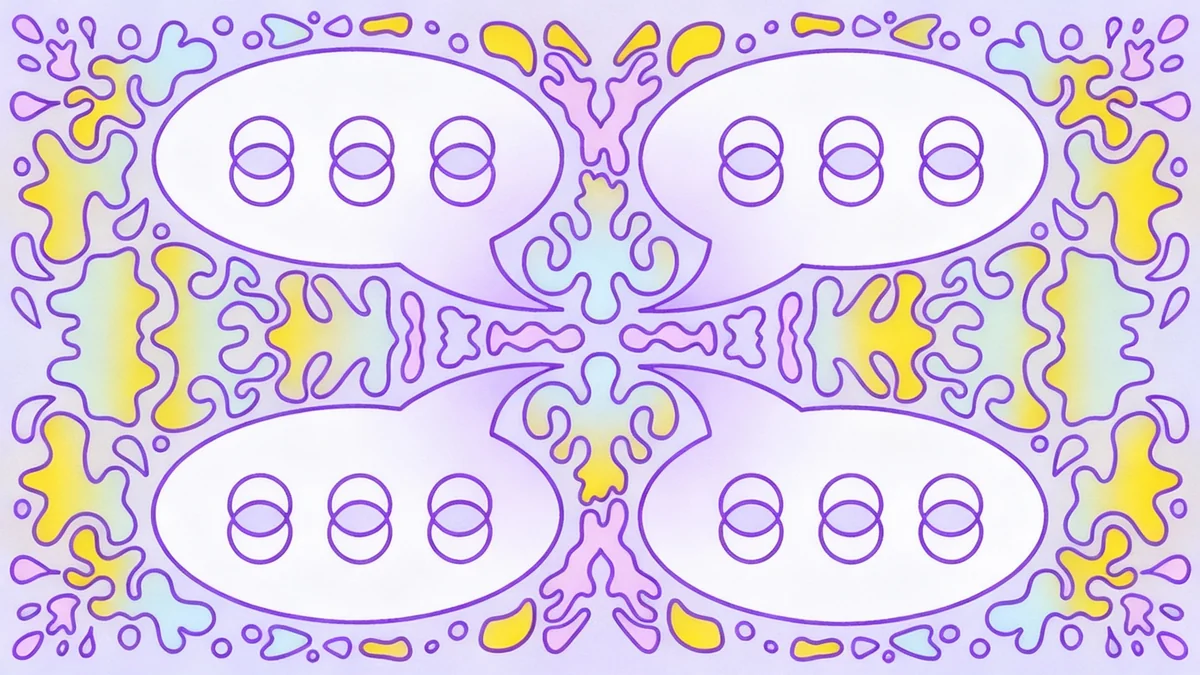Nvidia has made its artificial intelligence tool, Audio2Face, available as open-source technology. The software allows developers and creators to automatically generate realistic facial animations for 3D characters using only an audio file as input, a move expected to streamline development in gaming and other digital applications.
Key Takeaways
- Nvidia has released its Audio2Face AI technology as an open-source tool, making it freely accessible to developers.
- The tool generates facial animations and lip-syncing for 3D avatars directly from an audio voice track.
- The release includes the AI models, software development kits (SDKs), and the training framework for customization.
- Game studios like Farm51 are already using the technology in upcoming titles, demonstrating its practical application.
Expanding Access to Advanced Animation Technology
Nvidia announced a significant shift in its strategy by releasing its Audio2Face technology to the public as open-source software. This decision removes barriers to entry for developers, animators, and creators, allowing them to integrate advanced AI-driven animation into their projects without licensing fees. The tool is designed to simplify a traditionally complex and time-consuming aspect of 3D character creation.
By making the technology widely available, Nvidia aims to foster innovation across various industries. Game developers, filmmakers, and creators of virtual experiences can now leverage the tool to produce high-quality, synchronized facial animations more efficiently. This move is part of a broader trend in the tech industry where major companies release powerful tools to the community to accelerate development and establish their platforms as industry standards.
What is Open Source?
Open-source software has its source code made publicly available, allowing anyone to view, modify, and distribute it for their own purposes. This collaborative approach often leads to faster innovation, improved security, and wider adoption of a technology compared to proprietary, closed-source software.
How Audio2Face Works
The core function of Audio2Face is to translate the nuances of human speech into corresponding facial movements on a 3D model. The AI works by analyzing the acoustic properties of a voice recording, such as phonemes, pitch, and cadence. It then generates detailed animation data that controls the virtual character's facial muscles, including the lips, jaw, and cheeks, to create realistic expressions and accurate lip-syncing.
This process automates what has historically been a meticulous manual task for animators. Instead of hand-keying each facial movement to match dialogue, a developer can simply feed an audio track into the system. The technology can be applied to both pre-recorded dialogue for scripted scenes and real-time audio for live-streamed events or interactive applications.
From Sound Waves to Facial Expressions
The AI model behind Audio2Face was trained on vast amounts of data containing synchronized audio and 3D facial scans. This allows it to learn the intricate relationships between specific sounds and the facial shapes required to produce them, enabling it to generate convincing animations for any given voice input.
Practical Applications in the Gaming Industry
The video game industry is one of the primary beneficiaries of this technology. Several development studios have already integrated Audio2Face into their production pipelines to enhance character realism. For example, Farm51, the studio behind Chernobylite 2: Exclusion Zone, has utilized the tool to streamline its animation workflow.
Similarly, the developers of Alien: Rogue Incursion Evolved Edition have also adopted Audio2Face. For studios, especially smaller independent teams, this technology can significantly reduce production time and costs associated with character animation. It allows them to achieve a level of visual fidelity that was previously only possible for large, well-funded studios.
Beyond Pre-Scripted Dialogue
While Audio2Face is effective for animating characters with pre-written scripts, its capabilities extend to dynamic, real-time interactions. The technology can process live audio input, making it suitable for:
- Live Streaming: Virtual avatars or VTubers can have their facial expressions animated in real-time based on the streamer's voice.
- Interactive NPCs: Non-player characters (NPCs) in games could have more dynamic and believable facial reactions in response to player speech.
- Virtual Meetings: Digital avatars in metaverse platforms or virtual conference rooms could display realistic expressions during conversations.
A Comprehensive Toolkit for Customization
Nvidia's open-source release is not limited to the pre-built Audio2Face application. The company is providing a comprehensive package that gives developers deep control over the technology. The release includes the core AI models, the software development kits (SDKs) for integration, and, most importantly, the training framework.
"By providing the training framework, Nvidia is enabling users to tweak its models for different use cases, potentially adapting them for non-human characters or specific artistic styles."
Access to the training framework is a critical component of the release. It allows advanced users to fine-tune the AI models on their own custom datasets. This means a studio could, for instance, train the model to better animate the facial structure of a stylized cartoon character or even an alien creature. This level of customizability ensures that the tool can be adapted to a wide range of creative visions rather than producing a single, uniform animation style.
Potential Impact on the Broader Tech Landscape
The decision to open-source Audio2Face could have ripple effects beyond the gaming world. The technology has potential applications in virtual reality (VR), augmented reality (AR), and the development of more advanced digital assistants. As interactions with technology become more conversational, tools that can generate realistic and emotionally resonant digital faces will become increasingly important.
Furthermore, this move positions Nvidia's technology as a foundational tool for creators entering the metaverse and other immersive digital spaces. By providing powerful, accessible tools, Nvidia not only supports the developer community but also encourages the growth of an ecosystem built around its platforms and hardware. The open-source nature of Audio2Face is likely to accelerate experimentation and lead to novel applications that have not yet been envisioned.





